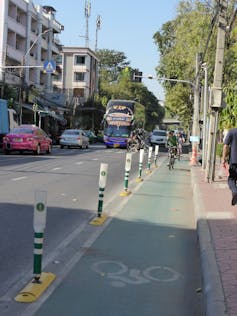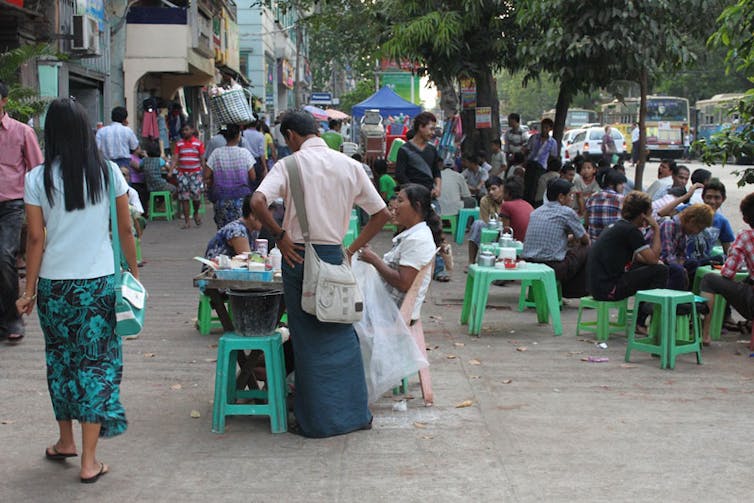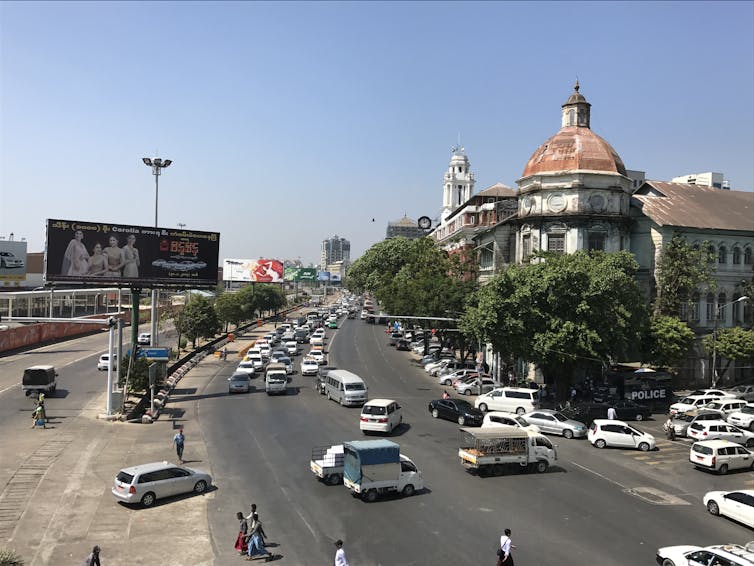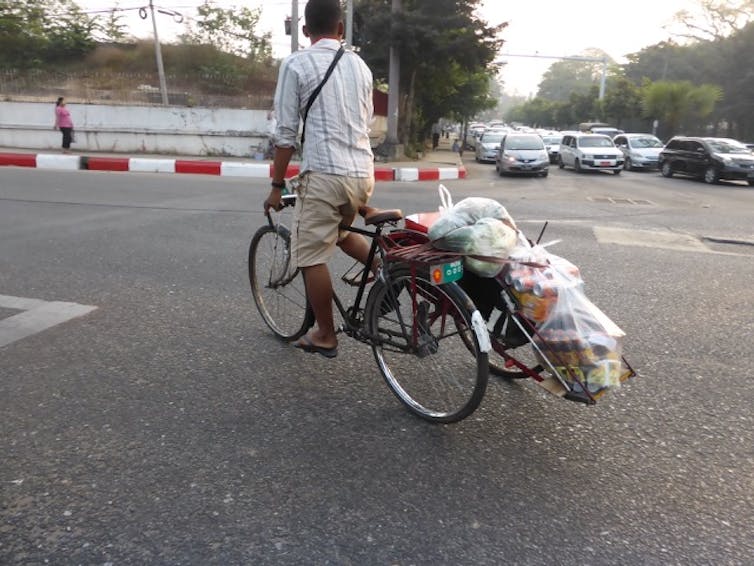When will the democracy deliver ‘car
At the dawn of the 21st century, planners around the world will consider a new agenda for cities. They would shrug off the dimly remembered nightmare of snaking concrete highways and smog-occluded horizons.
A time for new beginnings for many would mean reallocating the expensive real estate we call roads to forms of mobility that are more efficient and less polluting. People may work towards declaring a “car-independence day” and start to create change by looking to the orderly bicyclo-polises of northern Europe.

Left behind
But in Yangon, once the capital of Myanmar and, at 7.3 million inhabitants, its largest city, a complex mixture of history and circumstance means that the nightmare of car dependency is likely going to live on.

In 2011, the government lifted decades of restrictions on car imports flooding the streets with half a million cars. This decision has – and will continue to – radically reshape urban areas.
In years to come, it may well be looked back on as a watershed moment in Myanmar’s urban history.
Drastic action to deal with a spike in car ownership has led to a spate of flyover construction at major intersections in the city. The government attempted to deal with car congestion from early 2015 by requiring importers to prove the existence of a car space before an import licence is issued.
Predictably, this has led to an informal market in car park permits and put pressure on the abundant railway land in the city to be used for car park development.
Tragically, the political pressure to provide more car parks in the centre of Yangon is leading to a remodelling of the urban core. In 2013, the Yangon City Development Committee authorised the narrowing of a large number of the city’s once broad footpaths, where a great deal of street life took place, in favour of on-street car parking.

This remodelling is in addition to the destruction of the city’s 20th century heritage. According to the widely respected Yangon Heritage Trust, as much as 35% of the city’s downtown was destroyed between 1990 and 2011 to make way for new development.
The result is that Yangon’s walkability score, according to Walkscore, is 36 - classifying it as “car dependent”. Unfortunately, providing car parks works directly against the Yangon Heritage Trust’s aim to reduce congestion and to transform the city into Asia’s most livable.
How well positioned is the city to counter this?
Symbolism of a bicycle ban
Any visitor to Yangon would be struck by the lack of bicycles and motorbikes on the roads. Yangon is one of the only cities to currently ban motorbikes and bicycling, although this law is regularly flouted.

The ban is an unfortunate hangover from the totalitarian whims of the State Peace and Development Council (1998-2011), and is connected to a possibly apocryphal assassination attempt on a Minister in 2003.
Remarkably, this isn’t the first time that a totalitarian regime has banned bicycles. The German SS high command banned bicycling in Rome during the second world war, for instance, because of the success that bicycles delivered to partisans assassinating Nazi-German officers.

As always, emerging solutions to Yangon’s transport crisis are to be found less with the government and more in the interstices of governance. A ban on bicycling hasn’t detracted from the enthusiasm of the Yangon bicycling action network, for example. Let alone the new gig-entrepreneurs of the recently established Yangon Food Bicycle Delivery Service, Yangon Door2Door.
Looking forward
Attitudes to bicycling stand as a useful bellwether of city governance in different countries. In the US for example, cycling advocacy caters for people with higher incomes but the majority of cyclists are poor.

Compare images of Beijing in the 1980s where bicycles were 20 deep at traffic lights with images of current traffic congestion as a symbol of Chinese economic growth and rising inequality.
At once a mode of transport and a political choice, 200 years on from its invention, the bicycle continues to challenge our thinking about cities. Its history casts the individually owned and driven car into shadow as a mode of transport that bicycles will probably outlast in its current form.
Yangon is a jewel of 19th and 20th century urban history in southeast Asia. And it has all the right ingredients to become Asia’s most livable city.
Visitors are struck that it has escaped the excesses of rampant development that has swept away decades of history in other southeast Asian cities, such as Hanoi and Jakarta.
Indeed within a few blocks of the centre of town, it faithfully preserves every single 20th century architectural tropical style. Yet as it embarks on a new planning trajectory, whether it can remain untouched by the 20th century legacy of the car and chart a course for the bicycle instead, remains uncertain.
This article was co-authored by students Heidi Blundy and Elissa Gee who went on a study tour to Myanmar as part of their Masters of International Urban and Environmental Management in collaboration with ActionAid.
本文地址:http://panshare.cn/wenxueyishu/
版权声明
本文仅代表作者观点,不代表本站立场。
本文系作者授权发表,未经许可,不得转载。